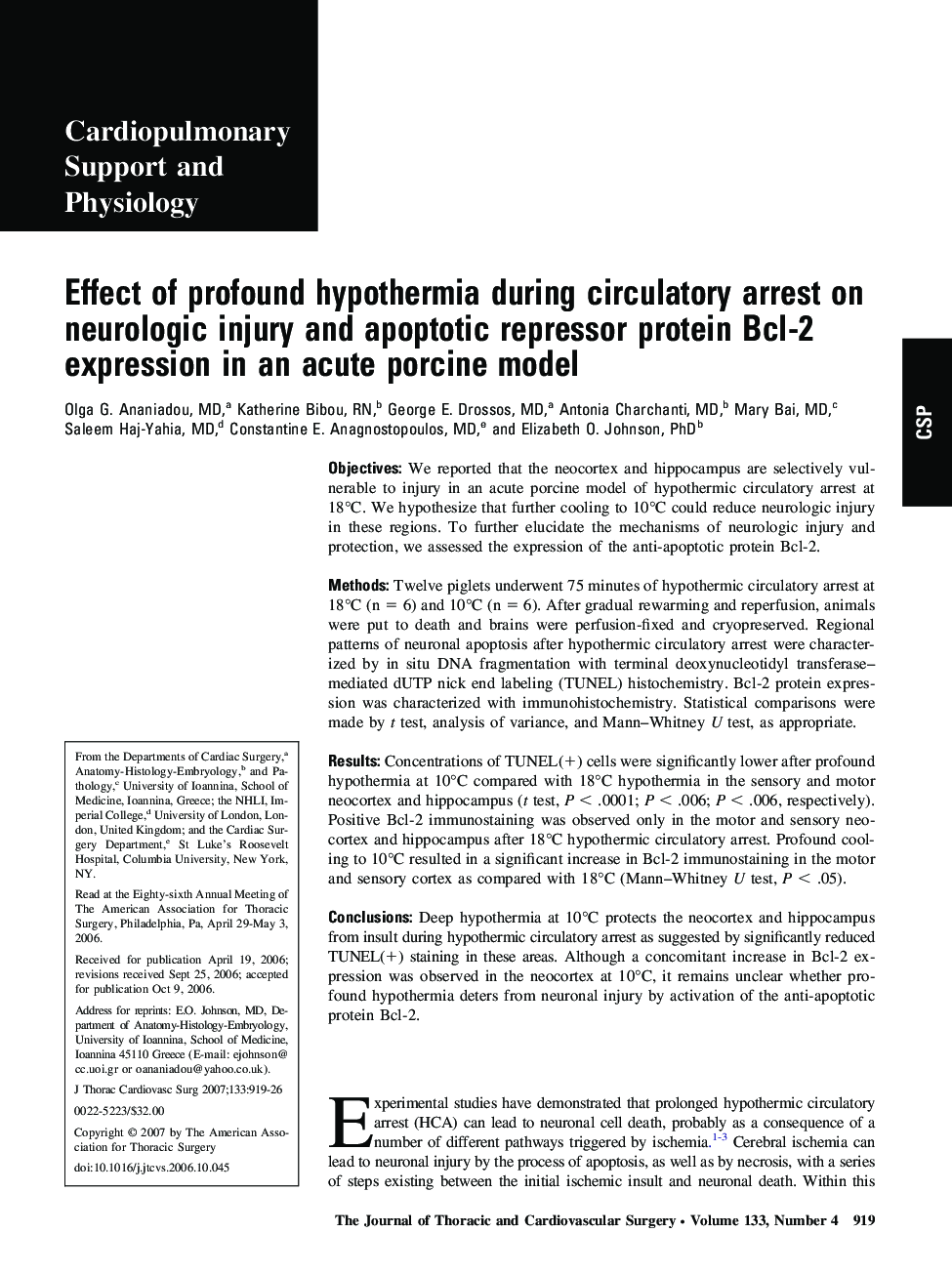| Article ID | Journal | Published Year | Pages | File Type |
|---|---|---|---|---|
| 2986931 | The Journal of Thoracic and Cardiovascular Surgery | 2007 | 8 Pages |
ObjectivesWe reported that the neocortex and hippocampus are selectively vulnerable to injury in an acute porcine model of hypothermic circulatory arrest at 18°C. We hypothesize that further cooling to 10°C could reduce neurologic injury in these regions. To further elucidate the mechanisms of neurologic injury and protection, we assessed the expression of the anti-apoptotic protein Bcl-2.MethodsTwelve piglets underwent 75 minutes of hypothermic circulatory arrest at 18°C (n = 6) and 10°C (n = 6). After gradual rewarming and reperfusion, animals were put to death and brains were perfusion-fixed and cryopreserved. Regional patterns of neuronal apoptosis after hypothermic circulatory arrest were characterized by in situ DNA fragmentation with terminal deoxynucleotidyl transferase–mediated dUTP nick end labeling (TUNEL) histochemistry. Bcl-2 protein expression was characterized with immunohistochemistry. Statistical comparisons were made by t test, analysis of variance, and Mann–Whitney U test, as appropriate.ResultsConcentrations of TUNEL(+) cells were significantly lower after profound hypothermia at 10°C compared with 18°C hypothermia in the sensory and motor neocortex and hippocampus (t test, P < .0001; P < .006; P < .006, respectively). Positive Bcl-2 immunostaining was observed only in the motor and sensory neocortex and hippocampus after 18°C hypothermic circulatory arrest. Profound cooling to 10°C resulted in a significant increase in Bcl-2 immunostaining in the motor and sensory cortex as compared with 18°C (Mann–Whitney U test, P < .05).ConclusionsDeep hypothermia at 10°C protects the neocortex and hippocampus from insult during hypothermic circulatory arrest as suggested by significantly reduced TUNEL(+) staining in these areas. Although a concomitant increase in Bcl-2 expression was observed in the neocortex at 10°C, it remains unclear whether profound hypothermia deters from neuronal injury by activation of the anti-apoptotic protein Bcl-2.
